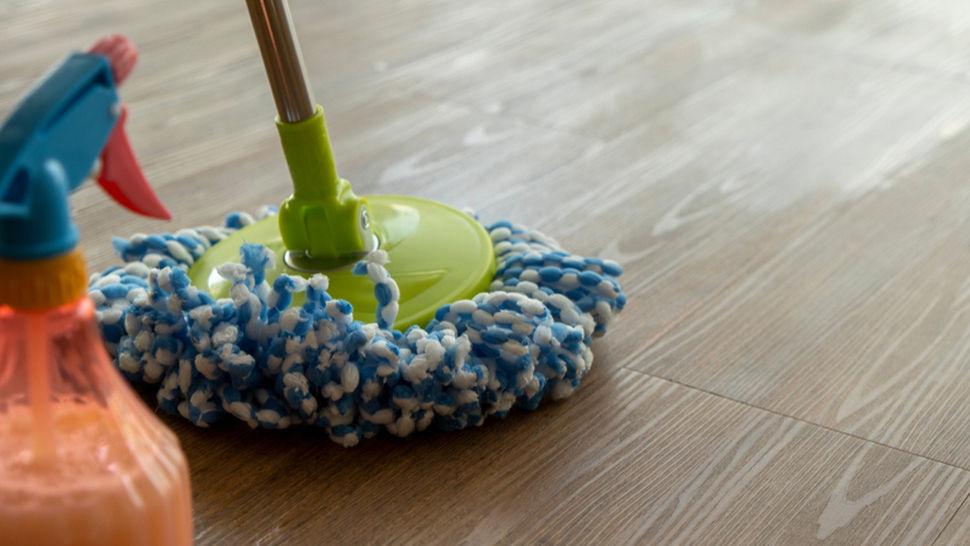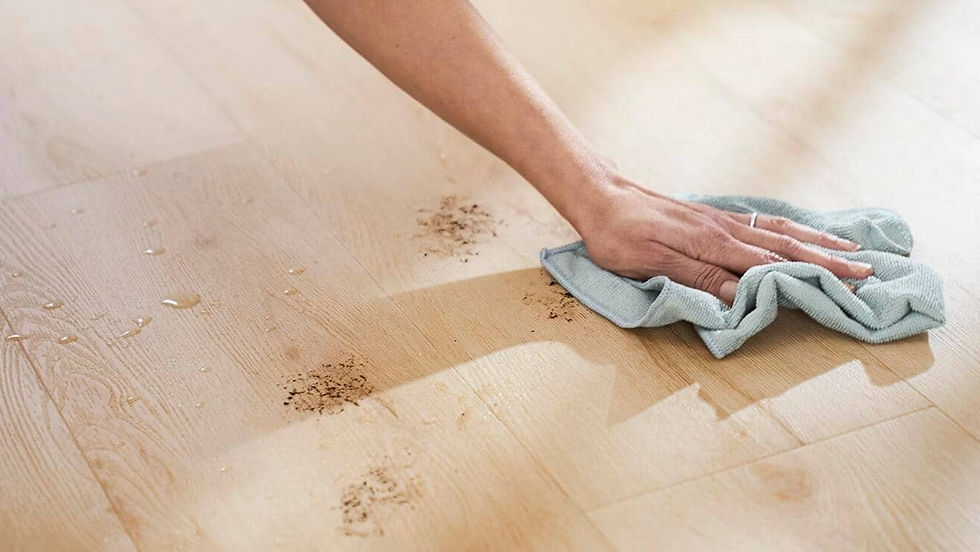Vinyl Flooring Maintenance Tips: Easy Guide to Keep Your Floors Looking Brand New
- Arc Floor
- Mar 21
- 4 min read
Updated: Jul 16
Vinyl flooring is a favourite for many homeowners, offering the ideal mix of durability, affordability, and design flexibility. But even the most hard-wearing floors benefit from some regular attention. Whether your vinyl flooring is newly installed or has been part of your home for years, looking after it correctly will keep it looking clean, fresh and well-maintained for longer.
In this guide, we share our top vinyl flooring maintenance tips to help you protect your investment and enjoy beautiful floors that perform well in daily life.
Why Vinyl Flooring Care Matters
Vinyl flooring holds up well under pressure, but that does not mean it should be neglected. Daily foot traffic brings in dust, fine grit, and spills, all of which can wear down the protective surface over time. Without consistent care, grime can build up, dulling the appearance and weakening any adhesive used beneath the surface.
Moisture is another threat. If water seeps into seams, it can lead to bubbling, lifting, or mould growth underneath the planks—especially in humid climates like Singapore. Fortunately, maintaining vinyl flooring is simple with the right habits. Basic steps like dry sweeping, gentle mopping, and avoiding harmful cleaning products will prevent most common issues. A small daily effort can help your vinyl flooring remain attractive and long-lasting.
Guide to Cleaning Vinyl Floors
Cleaning vinyl flooring does not need to be complicated, but there is a right way to do it. With the proper products and techniques, you can remove dirt and build-up without damaging the floor’s protective surface.

Sweep/Vacuum Daily: It may sound basic, but daily sweeping or vacuuming is one of the most effective ways to preserve the wear layer of your vinyl flooring. Grit and dust particles might be small, but underfoot they act like sandpaper, creating tiny scratches that eventually dull the finish. Use a soft-bristle broom or a vacuum with a hard floor setting to clear debris without damaging the surface.
Use Vinyl-Safe Floor Cleaners: When it comes to deeper cleaning, always choose a pH-neutral cleaner that is specifically formulated for vinyl flooring. Harsh or multi-purpose cleaners can strip away the protective layer and shorten your floor’s lifespan. Avoid anything containing formaldehyde, ammonia, petroleum, phosphates, phthalates or parabens, as these ingredients can cause fading, brittleness, or surface breakdown over time.
Mop with Minimal Water: Despite being water-resistant, vinyl does not handle excess moisture well if left to sit. A mop that is too wet can allow standing puddles of water to seep into the seams, especially with floating or click-lock vinyl flooring. This can cause the planks to warp or lift. Always wring out your mop thoroughly and clean using light, controlled strokes.
Dry the Floor After Mopping: Once the floor has been cleaned, speed up the drying process by using a clean, dry mop or microfibre cloth. This helps remove any remaining moisture and reduces the chance of water slipping into edges or joints. Air drying is fine too, as long as no standing water is left behind.
Tips for Long-Term Care
Beyond day-to-day cleaning, long-term care habits are essential for preserving the look and performance of your vinyl flooring. These simple but effective tips are aimed at creating a flooring-friendly environment to help make upkeep simpler in the long-term!

Prevent Scratches Before They Happen: Vinyl flooring may be durable, but it is not invincible. Use doormats at every entrance to trap dirt and stones, and consider adopting a no-shoes policy indoors to reduce tracked-in grit and residue. Attach soft pads to furniture legs, and be mindful when moving heavy items across the floor.
Clean Spills Immediately: Quick action matters when dealing with spills. Even water can cause damage if left too long, especially around seams. Sugary liquids like juice or soda are particularly troublesome, as they leave sticky residue that attracts more dirt. Wipe spills with a damp cloth as soon as they occur to prevent staining and long-term build-up.
Avoid Abrasive Cleaners and Tools: Skip the bleach, powdered cleansers, and high-alkaline products. These can strip away the top layer and cause irreversible surface damage. Steel wool, scrubbing pads, or hard brushes should also be avoided. Instead, use soft cloths, non-abrasive sponges, and vinyl-specific cleaners for safe, effective maintenance.
Article Summary
To sum up what was discussed in this article, your weekly vinyl floor care routine should look something like this:
Daily: Sweep or vacuum to remove grit
Weekly: Mop with a pH-neutral, vinyl-safe cleaner using minimal water
As Needed: Spot-clean spills immediately using a soft, damp cloth
Never Use: Bleach, ammonia, vinegar, or abrasive tools on vinyl flooring
Bonus Tip: Ensure that there are no standing puddles of water left on the vinyl flooring's surface, especially after mopping!
Remember that vinyl flooring is designed to be low-maintenance—but low-maintenance doesn’t mean no maintenance! With the right cleaning habits and a bit of preventive care, you and your loved ones will enjoy beautiful, long-lasting vinyl floors that continue to enhance your home’s comfort and style.
Professional Vinyl Cleaning Services
Even newly installed vinyl floors can trap dust, debris, and bacteria from recently-completed renovation works! A professional deep clean removes hidden contaminants that regular cleaning may miss. Alternatively, a vinyl deep cleaning helps restore the shine and hygiene of your floors. If you're interested in having your floors look its best, contact Arc Floor for a vinyl deep clean today!



Comments